Potentialities of CdZnTe Quasi-Hemispherical Detectors for Hard X-ray Spectroscopy of Kaonic Atoms at the DAΦNE Collider
Abstract
1. Introduction
2. Materials and Methods
2.1. The CZT Quasi-Hemispherical Detector
2.2. Readout Electronics and Pulse Processing
- (i)
- Pulse detection: The output waveforms from each detector–preamplifier are shaped using the classical single delay line (SDL) shaping technique [56], i.e., using a differentiation operation in the time domain; the time width of the SDL pulses (equal to the sum of the peaking time and the delay time) represents the dead time of the detection process (paralyzable dead time) [56]. Typically, the delay of the SDL shaping is selected with values less than the peaking time of the CSP pulses in order to reduce the dead time. The arrival time of each event is calculated through the ARC (amplitude and rise time compensation) timing marker (at the leading edge of the SDL pulses), necessary to reduce the effects of time jitters and amplitude/rise time walks [56]. The timing resolution is less than 10 ns.
- (ii)
- Snapshot waveforms (SWs): They consist of waveforms of CSP output pulses with the related arrival times produced for off-line PSHA. Each CSP pulse is centered on a time window, the duration of which is termed snapshot time (ST). A pulse is accepted if it is not preceded and not followed by another pulse in the ST/2 time windows. The ST parameter can be selected by the user.
2.3. Experimental Set-Up
3. Measurements and Results
3.1. Spectroscopic Response of the Detector
3.2. Measurements at the DAϕNE Collider
4. Discussion and Conclusions
- Low room temperature leakage currents (<1 nA at 1000 V) were measured, confirming the high quality of the fabricated detectors for optimal matching with low-noise charge-sensitive preamplifiers.
- The pixel size (750 µm diameter), properly selected after simulation, represents the best compromise between the reduction of electronic noise and the enhancements of the charge collection efficiency. In this study, it allowed interesting room-temperature energy resolution: 4.4% FWHM (2.6 keV), 3% (3.7 keV), and 1.4% (9.3 keV) at 59.5, 122.1, and 662 keV, respectively, overcoming the spectroscopic limits of these detectors on X-ray detection in the low energy range (<100 keV).
- The CZT module ensured a large detection area (10 × 10 mm2) with a single readout channel; moreover, further spectroscopic improvements could be achieved by digital pulse processing analysis (pulse shape analysis through the peaking times of the pulses) without the use of further detector channels.
- Successful tests within the DAΦNE collider environment were obtained, with particular focus on background reduction and the absence of radiation damage. The obtained background rejection factors of 103 represent a promising result, which encourages us to include these detectors in measurements of radiative transitions from several intermediate and high-mass kaonic atoms.
Author Contributions
Funding
Institutional Review Board Statement
Informed Consent Statement
Data Availability Statement
Conflicts of Interest
References
- Curceanu, C.; Guaraldo, C.; Iliescu, M.; Cargnelli, M.; Hayano, R.; Marton, J.; Zmeskal, J.; Ishiwatari, T.; Iwasaki, M.; Okada, S.; et al. The modern era of light kaonic atom experiments. Rev. Mod. Phys. 2019, 91, 025006. [Google Scholar] [CrossRef]
- Gal, A.; Hungerford, E.V.; Millener, D.J. Strangeness in nuclear physics. Rev. Mod. Phys. 2016, 88, 035004. [Google Scholar] [CrossRef]
- Horiuchi, W.; Hyodo, T.; Weise, W. Kaonic deuterium from realistic antikaon-nucleon interaction. EPJ Web Conf. 2019, 199, 03003. [Google Scholar] [CrossRef]
- Wiegand, C.E.; Pehl, R.H. Measurement of Kaonic X rays from He-4. Phys. Rev. Lett. 1971, 27, 1410–1412. [Google Scholar] [CrossRef]
- Batty, C.; Biagi, S.; Hoath, S.; Sharman, P.; Davies, J.; Pyle, G.; Squier, G. Measurement of kaonic and pionic X-rays from liquid helium. Nucl. Phys. A 1979, 326, 455–462. [Google Scholar] [CrossRef]
- Barnes, P.; Eisenstein, R.; Lam, W.; Miller, J.; Sutton, R.; Eckhause, M.; Kane, J.; Welsh, R.; Jenkins, D.; Powers, R.; et al. Measurement of kaonic X-rays from Al, Si, Ni and Cu. Nucl. Phys. A 1974, 231, 477–492. [Google Scholar] [CrossRef]
- Beer, G.; Bragadireanu, A.M.; Cargnelli, M.; Curceanu-Petrascu, C.; Egger, J.-P.; Fuhrmann, H.; Guaraldo, C.; Iliescu, M.; Ishiwatari, T.; Itahashi, K.; et al. Measurement of the Kaonic Hydrogen X-ray Spectrum. Phys. Rev. Lett. 2005, 94, 212302. [Google Scholar] [CrossRef] [PubMed]
- SIDDHARTA Collaboration; Bazzi, M.; Beer, G.; Bombelli, L.; Bragadireanu, A.M.; Cargnelli, M.; Corradi, G.; Curceanu (Petrascu), C.; d’uffizi, A.; Fiorini, C.; et al. A new measurement of kaonic hydrogen X-rays. Phys. Lett. B 2011, 704, 113–117. [Google Scholar] [CrossRef]
- Sgaramella, F.; Tüchler, M.; Amsler, C.; Bazzi, M.; Bosnar, D.; Bragadireanu, M.; Cargnelli, M.; Carminati, M.; Clozza, A.; Deda, G.; et al. Measurements of high-n transitions in intermediate mass kaonic atoms by siddharta-2 at daΦne. Eur. Phys. J. A 2023, 59, 56. [Google Scholar] [CrossRef]
- Gatti, E.; Rehak, P. Semiconductor drift chamber—An application of a novel charge transport scheme. Nucl. Instrum. Methods Phys. Res. 1984, 225, 608–614. [Google Scholar] [CrossRef]
- Gatti, E.; Rehak, P.; Walton, J.T. Silicon drift chambers—First results and optimum processing of signals. Nucl. Instrum. Methods Phys. Res. Sect. A Accel. Spectrometers Detect. Assoc. Equip. 1984, 226, 129–141. [Google Scholar] [CrossRef]
- Fiorini, C.; Gola, A.; Longoni, A.; Zanchi, M.; Restelli, A.; Perotti, F.; Lechner, P.; Soltau, H.; Strüder, L. A large-area monolithic array of silicon drift detectors for medical imaging. Nucl. Instrum. Methods Phys. Res. Sect. A Accel. Spectrometers Detect. Assoc. Equip. 2006, 568, 96–100. [Google Scholar] [CrossRef]
- Bertuccio, G.; Ahangarianabhari, M.; Graziani, C.; Macera, D.; Shi, Y.; Rachevski, A.; Rashevskaya, I.; Vacchi, A.; Zampa, G.; Zampa, N.; et al. A Silicon Drift Detector-CMOS front-end system for high resolution X-ray spectroscopy up to room temperature. J. Instrum. 2015, 10, P01002. [Google Scholar] [CrossRef]
- Curceanu, C.; Abbene, L.; Amsler, C.; Bazzi, M.; Bettelli, M.; Borghi, G.; Bosnar, D.; Bragadireanu, M.; Buttacavoli, A.; Cargnelli, M.; et al. Kaonic atoms at the DAΦNE collider: A strangeness adventure. Front. Phys. 2023; submitted. [Google Scholar]
- Abbene, L.; Iniewski, K. High-Z Materials for X-ray Detection: Material Properties and Characterization Techniques, 1st ed.; Springer: Cham, Switzerland, 2023; pp. 1–246. [Google Scholar]
- Del Sordo, S.; Abbene, L.; Caroli, E.; Mancini, A.M.; Zappettini, A.; Ubertini, P. Progress in the Development of CdTe and CdZnTe Semiconductor Radiation Detectors for Astrophysical and Medical Applications. Sensors 2009, 9, 3491–3526. [Google Scholar] [CrossRef] [PubMed]
- Del Sordo, S.; Strazzeri, M.; Agnetta, G.; Biondo, B.; Celi, F.; Giarrusso, S.; Mangano, A.; Russo, F.; Caroli, E.; Donati, A.; et al. Spectroscopic performances of 16 × 16 pixel CZT imaging hard-X-ray detectors. Nuovo C. B Ser. 2004, 119, 257–270. [Google Scholar]
- Johns, P.M.; Nino, G.C. Room temperature semiconductor detectors for nuclear security. J. Appl. Phys. 2019, 126, 040902. [Google Scholar] [CrossRef]
- Owens, A. Semiconductor materials and radiation detection. J. Synchrotron Radiat. 2006, 13, 143–150. [Google Scholar] [CrossRef]
- Iniewski, K. CZT detector technology for medical imaging. J. Instrum. 2014, 9, C11001. [Google Scholar] [CrossRef]
- Barber, W.; Wessel, J.; Nygard, E.; Iwanczyk, J. Energy dispersive CdTe and CdZnTe detectors for spectral clinical CT and NDT applications. Nucl. Instrum. Methods Phys. Res. Sect. A Accel. Spectrometers Detect. Assoc. Equip. 2015, 784, 531–537. [Google Scholar] [CrossRef]
- Iwanczyk, J.S.; Nygard, E.; Meirav, O.; Arenson, J.; Barber, W.C.; Hartsough, N.E.; Malakhov, N.; Wessel, J.C. Photon Counting Energy Dispersive Detector Arrays for X-ray Imaging. IEEE Trans. Nucl. Sci. 2009, 56, 535–542. [Google Scholar] [CrossRef] [PubMed]
- Szeles, C.; Soldner, S.A.; Vydrin, S.; Graves, J.; Bale, D.S. CdZnTe Semiconductor Detectors for Spectroscopic X-ray Imaging. IEEE Trans. Nucl. Sci. 2008, 55, 572–582. [Google Scholar] [CrossRef]
- Owens, A.; Peacock, A. Compound semiconductor radiation detectors. Nucl. Instrum. Methods Phys. Res. Sect. A Accel. Spectrometers Detect. Assoc. Equip. 2004, 531, 18–37. [Google Scholar] [CrossRef]
- Taguchi, K.; Iwanczyk, J.S. Vision 20/20: Single photon counting X-ray detectors in medical imaging. Med. Phys. 2013, 40, 100901. [Google Scholar] [CrossRef] [PubMed]
- Nguyen, J.; Rodesch, P.-A.; Richtsmeier, D.; Iniewski, K.; Bazalova-Carter, M. Optimization of a CZT photon counting detector for contaminant detection. J. Instrum. 2021, 16, P11015. [Google Scholar] [CrossRef]
- Richtsmeier, D.; Guliyev, E.; Iniewski, K.; Bazalova-Carter, M. Contaminant detection in non-destructive testing using a CZT photon-counting detector. J. Instrum. 2021, 16, P01011. [Google Scholar] [CrossRef]
- Roque, G.; Schütz, M.K.; Fey, J.; Useche, J.S.; Fiederle, M.; Procz, S. Sub-pixel energy-weighting techniques for metallic contaminant highlighting in a pharmaceutical hard capsule using a Timepix3 CdZnTe hybrid pixel detector. J. Instrum. 2022, 17, P10030. [Google Scholar] [CrossRef]
- Buttacavoli, A.; Principato, F.; Gerardi, G.; Cascio, D.; Raso, G.; Bettelli, M.; Zappettini, A.; Taormina, V.; Abbene, L. Window-Based Energy Selecting X-ray Imaging and Charge Sharing in Cadmium Zinc Telluride Linear Array Detectors for Contaminant Detection. Sensors 2023, 23, 3196. [Google Scholar] [CrossRef]
- Ebert, J.; Gößling, C.; Gehre, D.; Hagner, C.; Heidrich, N.; Klingenberg, R.; Kröninger, K.; Nitsch, C.; Oldorf, C.; Quante, T.; et al. Long-term stability of underground operated CZT detectors based on the analysis of intrinsic 113Cd β−-decay. Nucl. Instrum. Methods Phys. Res. Sect. A Accel. Spectrometers Detect. Assoc. Equip. 2016, 821, 109–115. [Google Scholar] [CrossRef][Green Version]
- Luke, P.N. Single-polarity charge sensing in ionization detectors using coplanar electrodes. Appl. Phys. Lett. 1994, 65, 2884–2886. [Google Scholar] [CrossRef]
- He, Z.; Knoll, G.F.; Wehe, D.K.; Rojeski, R.; Mastrangelo, C.H.; Hammig, M.; Barrett, C.; Uritani, A. 1-D position sensitive single carrier semiconductor detectors. Nucl. Instrum. Methods Phys. Res. Sect. A Accel. Spectrometers Detect. Assoc. Equip. 1996, 380, 228–231. [Google Scholar] [CrossRef]
- Praus, P.; Kunc, J.; Belas, E.; Pekárek, J.; Grill, R. Charge transport in CdZnTe coplanar grid detectors examined by laser induced transient currents. Appl. Phys. Lett. 2016, 109, 133502. [Google Scholar] [CrossRef]
- Arlt, R.; Rundquist, D. Room temperature semiconductor detectors for safeguards measurements. Nucl. Instrum. Methods Phys. Res. Sect. A Accel. Spectrometers Detect. Assoc. Equip. 1996, 380, 455–461. [Google Scholar] [CrossRef]
- Vicini, V.; Zanettini, S.; Amadè, N.S.; Grill, R.; Zambelli, N.; Calestani, D.; Zappettini, A.; Abbene, L.; Bettelli, M. Optimization of quasi-hemispherical CdZnTe detectors by means of first principles simulation. Sci. Rep. 2023, 13, 3212. [Google Scholar] [CrossRef] [PubMed]
- Bao, L.; Zha, G.; Li, J.; Guo, L.; Dong, J.; Jie, W. CdZnTe quasi-hemispherical detector for gamma–neutron detection. J. Nucl. Sci. Technol. 2019, 56, 454–460. [Google Scholar] [CrossRef]
- Ivanov, V.; Alekseeva, L.; Dorogov, P.; Loutchanski, A. Correlation between quality of CZT crystals and spectrometric performance of hemispherical radiation detectors. In Proceedings of the IEEE Symposium Conference Record Nuclear Science 2004, Rome, Italy, 16–22 October 2004; Volume 7, pp. 4415–4419. [Google Scholar]
- Li, L.; Huang, G.; Xi, S.; Zhang, S.; Zhou, C.; Liu, D.; Wang, Z.; Zeng, G.; Yang, X. γ-ray energy spectrum response tailing in CdZnTe detector. Nucl. Instrum. Methods Phys. Res. Sect. A Accel. Spectrometers Detect. Assoc. Equip. 2022, 1037, 166922. [Google Scholar] [CrossRef]
- Bettelli, M.; Amadè, N.S.; Calestani, D.; Garavelli, B.; Pozzi, P.; Macera, D.; Zanotti, L.; Gonano, C.A.; Veale, M.C.; Zappettini, A. A first principle method to simulate the spectral response of CdZnTe-based X-and gamma-ray detectors. Nucl. Instrum. Methods Phys. Res. Sect. A Accel. Spectrometers Detect. Assoc. Equip. 2020, 960, 163663. [Google Scholar] [CrossRef]
- Jordanov, V.T.; Knoll, G.F.; Huber, A.C.; Pantazis, J.A. Digital techniques for real-time pulse shaping in radiation measurements. Nucl. Instrum. Methods Phys. Res. Sect. A Accel. Spectrometers Detect. Assoc. Equip. 1994, 353, 261–264. [Google Scholar] [CrossRef]
- Bolić, M.; Drndarević, V. Digital gamma-ray spectroscopy based on FPGA technology. Nucl. Instrum. Methods Phys. Res. Sect. A Accel. Spectrometers Detect. Assoc. Equip. 2002, 482, 761–766. [Google Scholar] [CrossRef]
- Cardoso, J.M.; Simões, J.B.; Correia, C.M. Dead-time analysis of digital spectrometers. Nucl. Instrum. Methods Phys. Res. Sect. A Accel. Spectrometers Detect. Assoc. Equip. 2004, 522, 487–494. [Google Scholar] [CrossRef]
- Arnold, L.; Baumann, R.; Chambit, E.; Filliger, M.; Fuchs, C.; Kieber, C.; Klein, D.; Medina, P.; Parisel, C.; Richer, M.; et al. TNT digital pulse processor. IEEE Trans. Nucl. Sci. 2006, 53, 723–728. [Google Scholar] [CrossRef]
- Papp, T.; Maxwell, J.A. A robust digital signal processor: Determining the true input rate. Nucl. Instrum. Methods Phys. Res. Sect. A Accel. Spectrometers Detect. Assoc. Equip. 2010, 619, 89–93. [Google Scholar] [CrossRef]
- Dambacher, M.; Zwerger, A.; Fauler, A.; Disch, C.; Stöhlker, U.; Fiederle, M. Development of the gamma-ray analysis digital filter multi-channel analyzer (GMCA). Nucl. Instrum. Methods Phys. Res. Sect. A Accel. Spectrometers Detect. Assoc. Equip. 2011, 652, 445–449. [Google Scholar] [CrossRef]
- Iniewski, K. CZT sensors for Computed Tomography: From crystal growth to image quality. J. Instrum. 2016, 11, C12034. [Google Scholar] [CrossRef]
- Chen, H.; Awadalla, S.A.; Iniewski, K.; Lu, P.H.; Harris, F.; Mackenzie, J.; Hasanen, T.; Chen, W.; Redden, R.; Bindley, G.; et al. Characterization of large cadmium zinc telluride crystals grown by traveling heater method. J. Appl. Phys. 2008, 103, 014903. [Google Scholar] [CrossRef]
- Chen, H.; Awadalla, S.A.; Mackenzie, J.; Redden, R.; Bindley, G.; Bolotnikov, A.E.; Camarda, G.S.; Carini, G.; James, R.B. Characterization of Traveling Heater Method (THM) Grown Cd0.9Zn0.1Te Crystals. IEEE Trans. Nucl. Sci. 2007, 54, 811–816. [Google Scholar] [CrossRef]
- Abbene, L.; Gerardi, G.; Raso, G.; Principato, F.; Zambelli, N.; Benassi, G.; Bettelli, M.; Zappettini, A. Development of new CdZnTe detectors for room-temperature high-flux radiation measurements. J. Synchrotron Radiat. 2017, 24, 429–438. [Google Scholar] [CrossRef]
- Abbene, L.; Gerardi, G.; Principato, F.; Bettelli, M.; Seller, P.; Veale, M.C.; Fox, O.; Sawhney, K.; Zambelli, N.; Benassi, G.; et al. Recent advances in the development of high-resolution 3D cadmium–zinc–telluride drift strip detectors. J. Synchrotron Radiat. 2020, 27, 1564–1576. [Google Scholar] [CrossRef]
- Abbene, L.; Gerardi, G.; Principato, F.; Bettelli, M.; Seller, P.; Veale, M.C.; Fox, O.; Sawhney, K.; Zambelli, N.; Benassi, G.; et al. Dual-polarity pulse processing and analysis for charge-loss correction in cadmium–zinc–telluride pixel detectors. J. Synchrotron Radiat. 2018, 25, 1078–1092. [Google Scholar] [CrossRef]
- Buttacavoli, A.; Gerardi, G.; Principato, F.; Mirabello, M.; Cascio, D.; Raso, G.; Bettelli, M.; Zappettini, A.; Seller, P.; Veale, M.C.; et al. Energy Recovery of Multiple Charge Sharing Events in Room Temperature Semiconductor Pixel Detectors. Sensors 2021, 21, 3669. [Google Scholar] [CrossRef]
- He, Z. Review of the Shockley–Ramo theorem and its application in semiconductor gamma-ray detectors. Nucl. Instrum. Methods Phys. Res. Sect. A Accel. Spectrometers Detect. Assoc. Equip. 2001, 463, 250–267. [Google Scholar] [CrossRef]
- Abbene, L.; Principato, F.; Gerardi, G.; Bettelli, M.; Seller, P.; Veale, M.C.; Zambelli, N.; Benassi, G.; Zappettini, A. Digital fast pulse shape and height analysis on cadmium–zinc–telluride arrays for high-flux energy-resolved X-ray imaging. J. Synchrotron Radiat. 2018, 25, 257–271. [Google Scholar] [CrossRef] [PubMed]
- Abbene, L.; Gerardi, G.; Raso, G.; Basile, S.; Brai, M.; Principato, F. Energy resolution and throughput of a new real time digital pulse processing system for X-ray and gamma ray semiconductor detectors. J. Instrum. 2013, 8, P07019. [Google Scholar] [CrossRef]
- Knoll, G.F. Radiation Detection and Measurement, 3rd ed.; John Wiley & Sons, Inc.: New York, NY, USA, 2000; pp. 663–665. [Google Scholar]
- Buttacavoli, A.; Principato, F.; Gerardi, G.; Bettelli, M.; Zappettini, A.; Seller, P.; Veale, M.C.; Zanettini, S.; Abbene, L. Ballistic Deficit Pulse Processing in Cadmium–Zinc–Telluride Pixel Detectors for High-Flux X-ray Measurements. Sensors 2022, 22, 3409. [Google Scholar] [CrossRef] [PubMed]
- Skurzok, M.; Scordo, A.; Niedzwiecki, S.; Baniahmad, A.; Bazzi, M.; Bosnar, D.; Bragadireanu, M.; Carminati, M.; Cargnelli, M.; Clozza, A.; et al. Characterization of the SIDDHARTA-2 luminosity monitor. J. Instrum. 2020, 15, P10010. [Google Scholar] [CrossRef]
- Abbene, L.; Principato, F.; Buttacavoli, A.; Gerardi, G.; Bettelli, M.; Zappettini, A.; Altieri, S.; Auricchio, N.; Caroli, E.; Zanettini, S.; et al. Potentialities of High-Resolution 3-D CZT Drift Strip Detectors for Prompt Gamma-Ray Measurements in BNCT. Sensors 2022, 22, 1502. [Google Scholar] [CrossRef] [PubMed]
- Bolotnikov, A.; Camarda, G.; Cui, Y.; De Geronimo, G.; Eger, J.; Emerick, A.; Fried, J.; Hossain, A.; Roy, U.; Salwen, C.; et al. Use of high-granularity CdZnTe pixelated detectors to correct response non-uniformities caused by defects in crystals. Nucl. Instrum. Methods Phys. Res. Sect. A Accel. Spectrometers Detect. Assoc. Equip. 2015, 805, 41–54. [Google Scholar] [CrossRef]
- Budtz-Jorgensen, C.; Kuwetli, I. New position algorithms for the 3D CZT drift detector. IEEE Trans. Nucl. Sci. 2017, 64, 1611–1618. [Google Scholar] [CrossRef]
- van Pamelen, M.; Budtz-Jørgensen, C. CdZnTe drift detector with correction for hole trapping. Nucl. Instrum. Methods Phys. Res. Sect. A Accel. Spectrometers Detect. Assoc. Equip. 1998, 411, 197–200. [Google Scholar] [CrossRef]
- Shor, A.; Eisen, Y.; Mardor, I. Optimum spectroscopic performance from CZT γ- and X-ray detectors with pad and strip segmentation. Nucl. Instrum. Methods Phys. Res. Sect. A Accel. Spectrometers Detect. Assoc. Equip. 1999, 428, 182–192. [Google Scholar] [CrossRef]
- Verger, L.; D’aillon, E.G.; Monnet, O.; Montémont, G.; Pelliciari, B. New trends in γ-ray imaging with CdZnTe/CdTe at CEA-Leti. Nucl. Instrum. Methods Phys. Res. Sect. A Accel. Spectrometers Detect. Assoc. Equip. 2007, 571, 33–43. [Google Scholar] [CrossRef]
- Montemont, G.; Moulin, C.; Isard, J.; Verger, L. A digital pulse processing system dedicated to CdZnTe detectors. IEEE Trans. Nucl. Sci. 2005, 52, 2017–2022. [Google Scholar] [CrossRef]
- Keyser, R. Characterization of room temperature detectors using the proposed. In Proceedings of the 2001 IEEE Nuclear Science Symposium Conference Record (Cat. No.01CH37310), San Diego, CA, USA, 4–10 November 2001; Volume 1, pp. 315–318. [Google Scholar] [CrossRef]

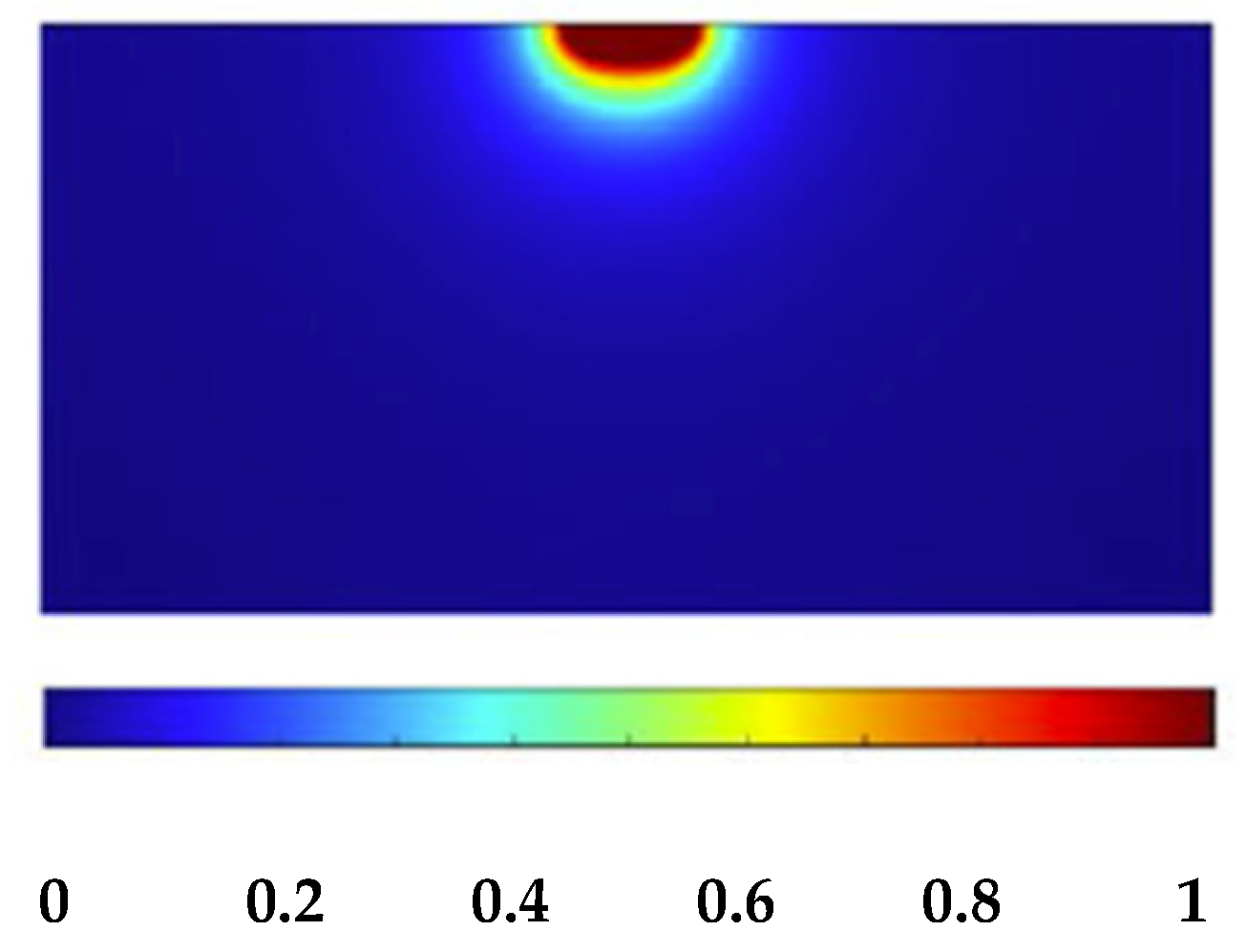
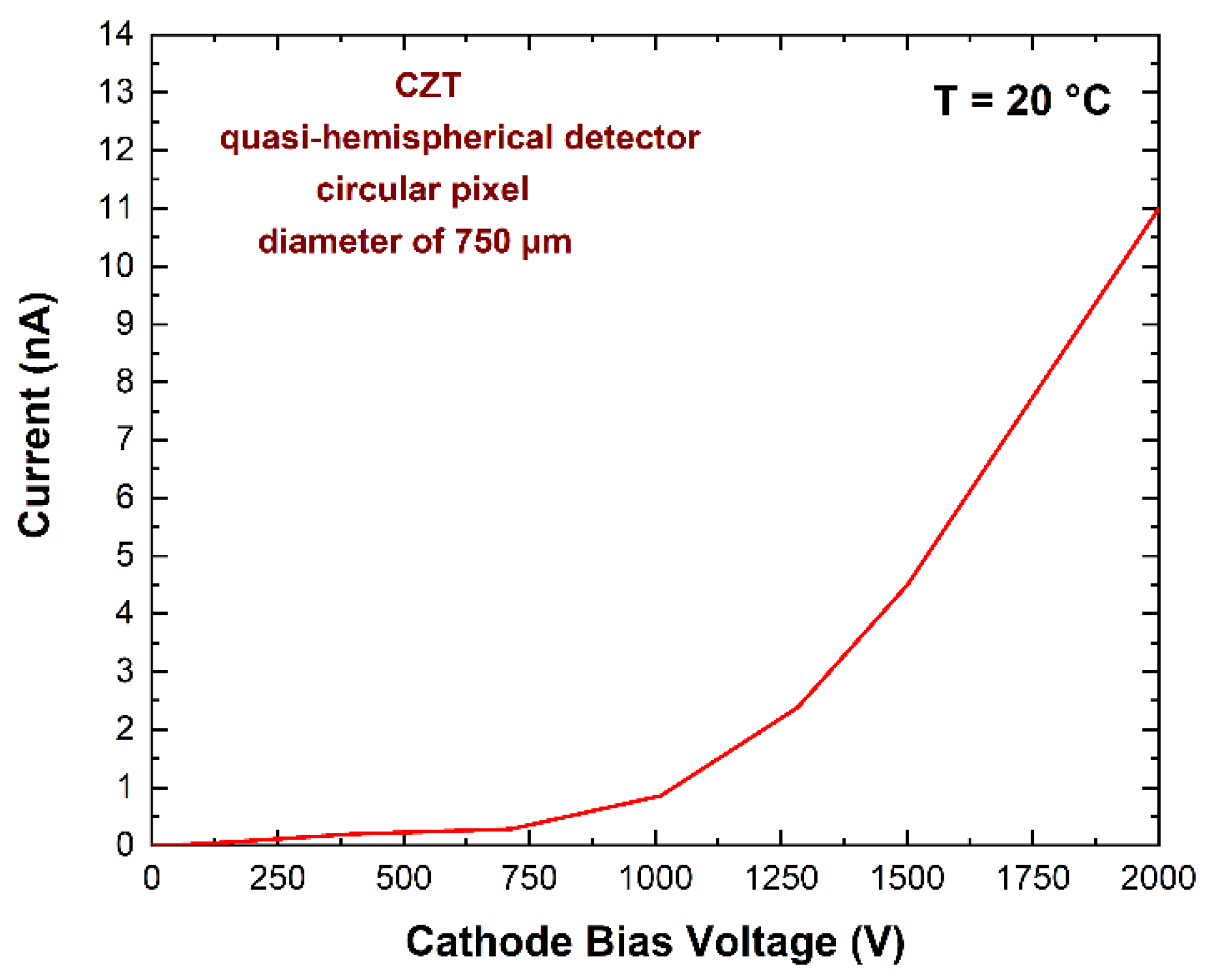

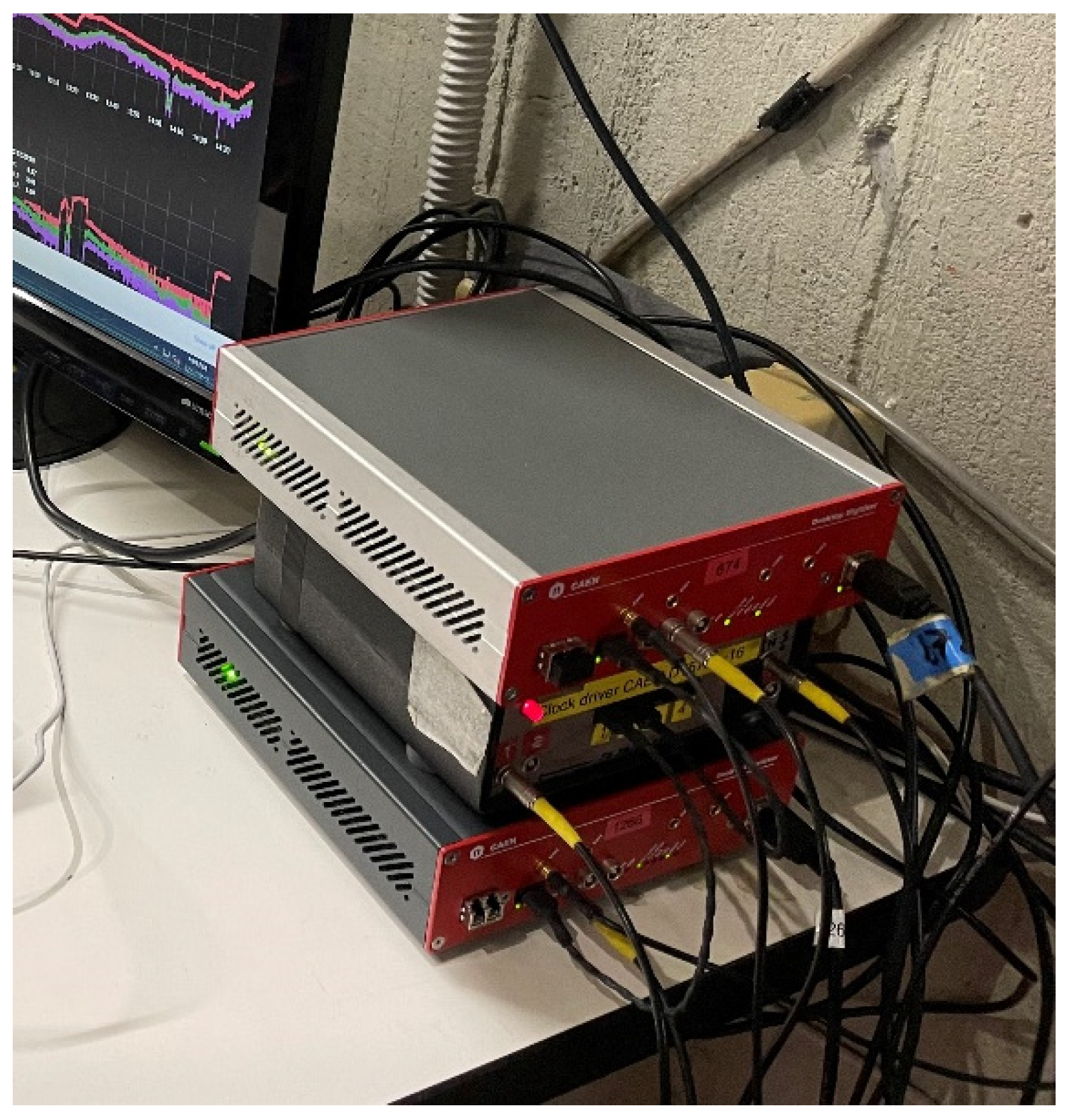
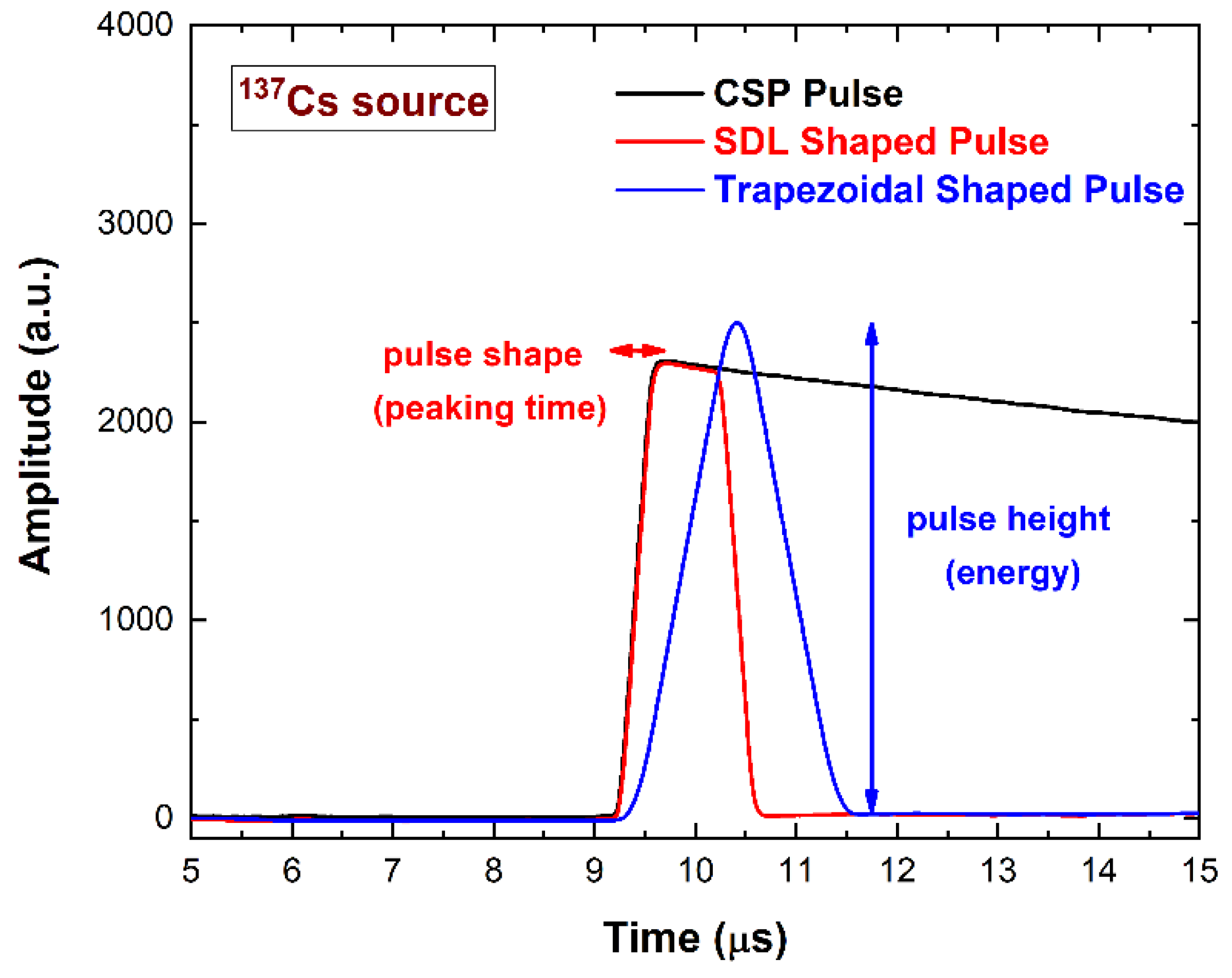
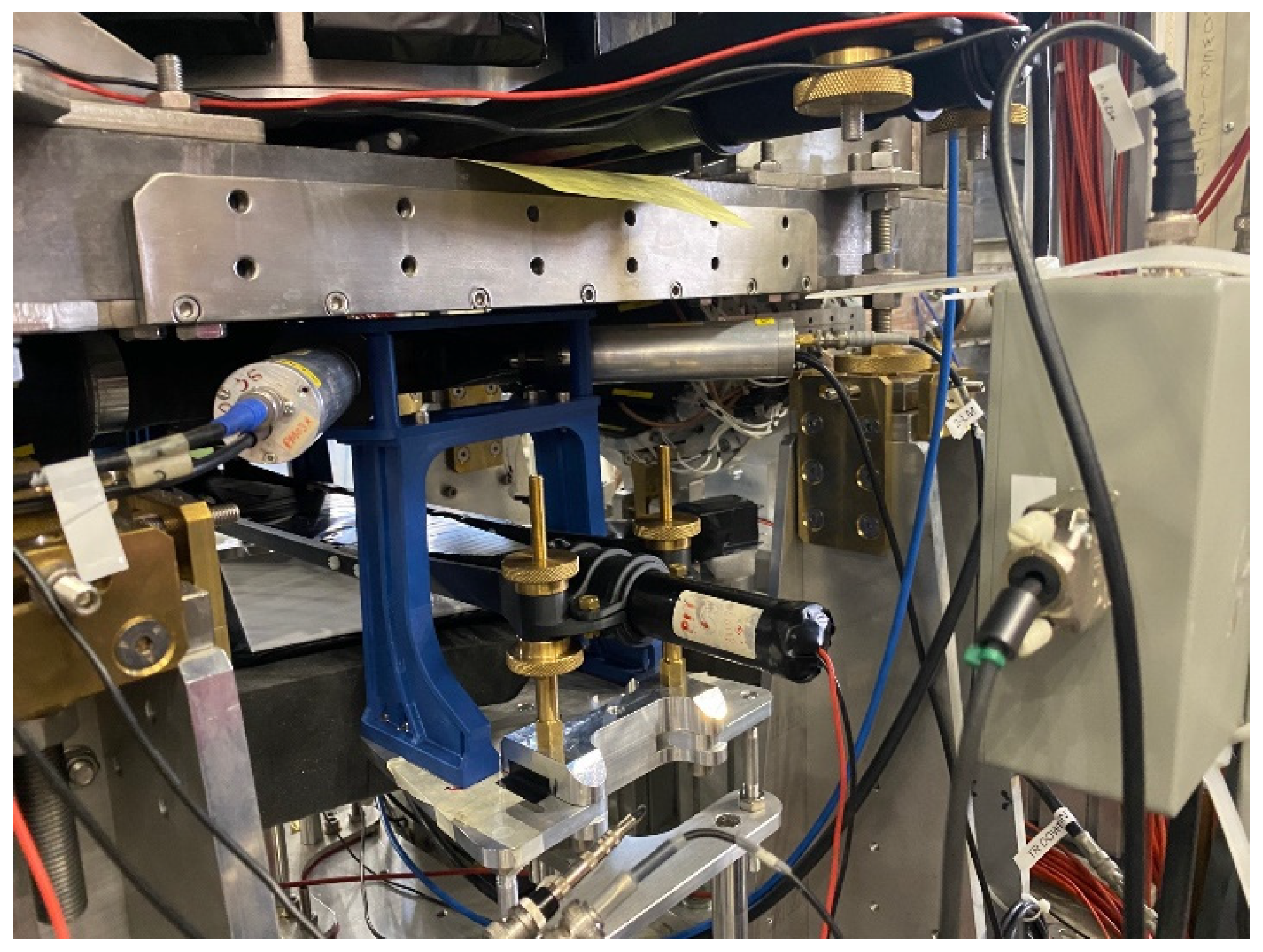
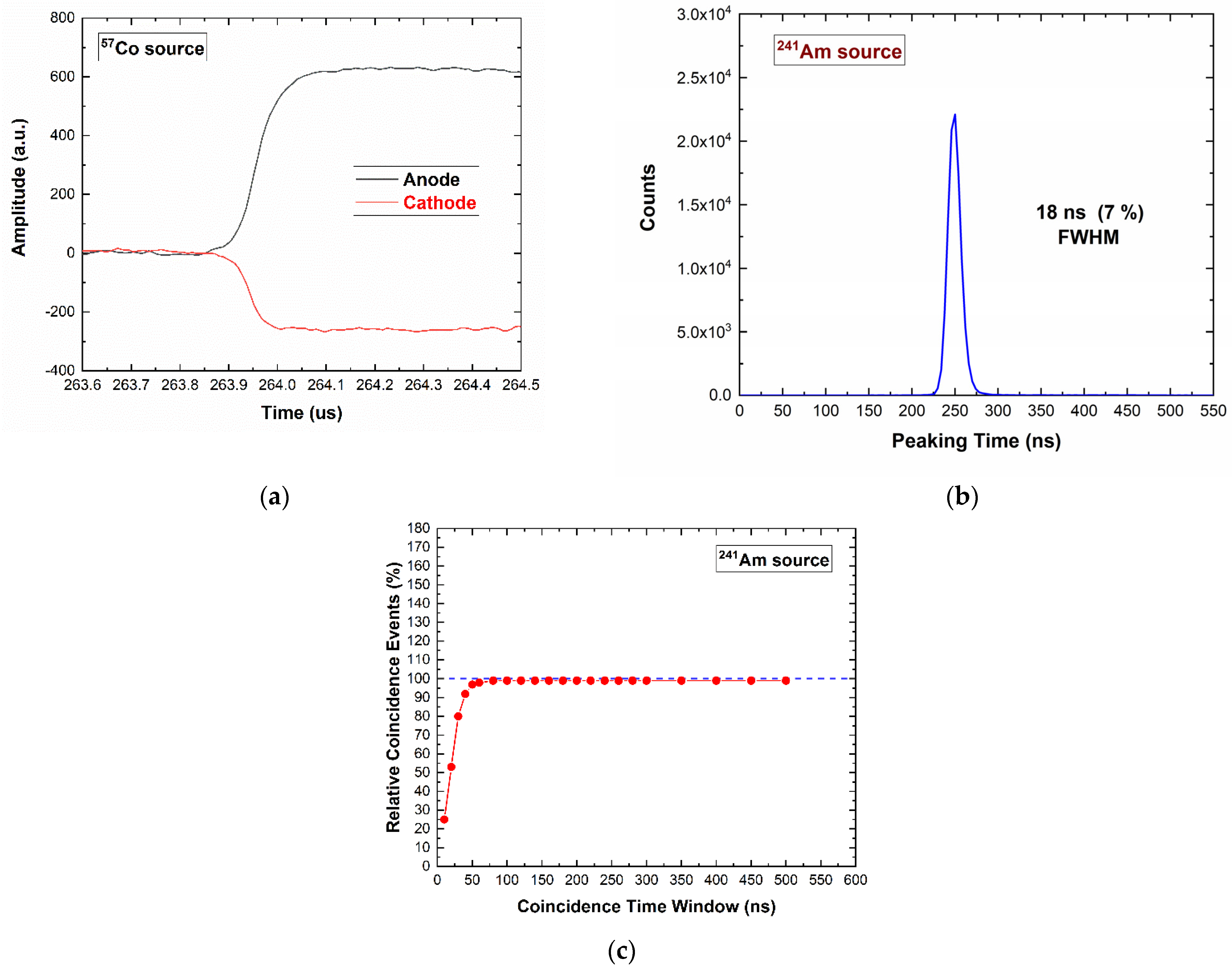
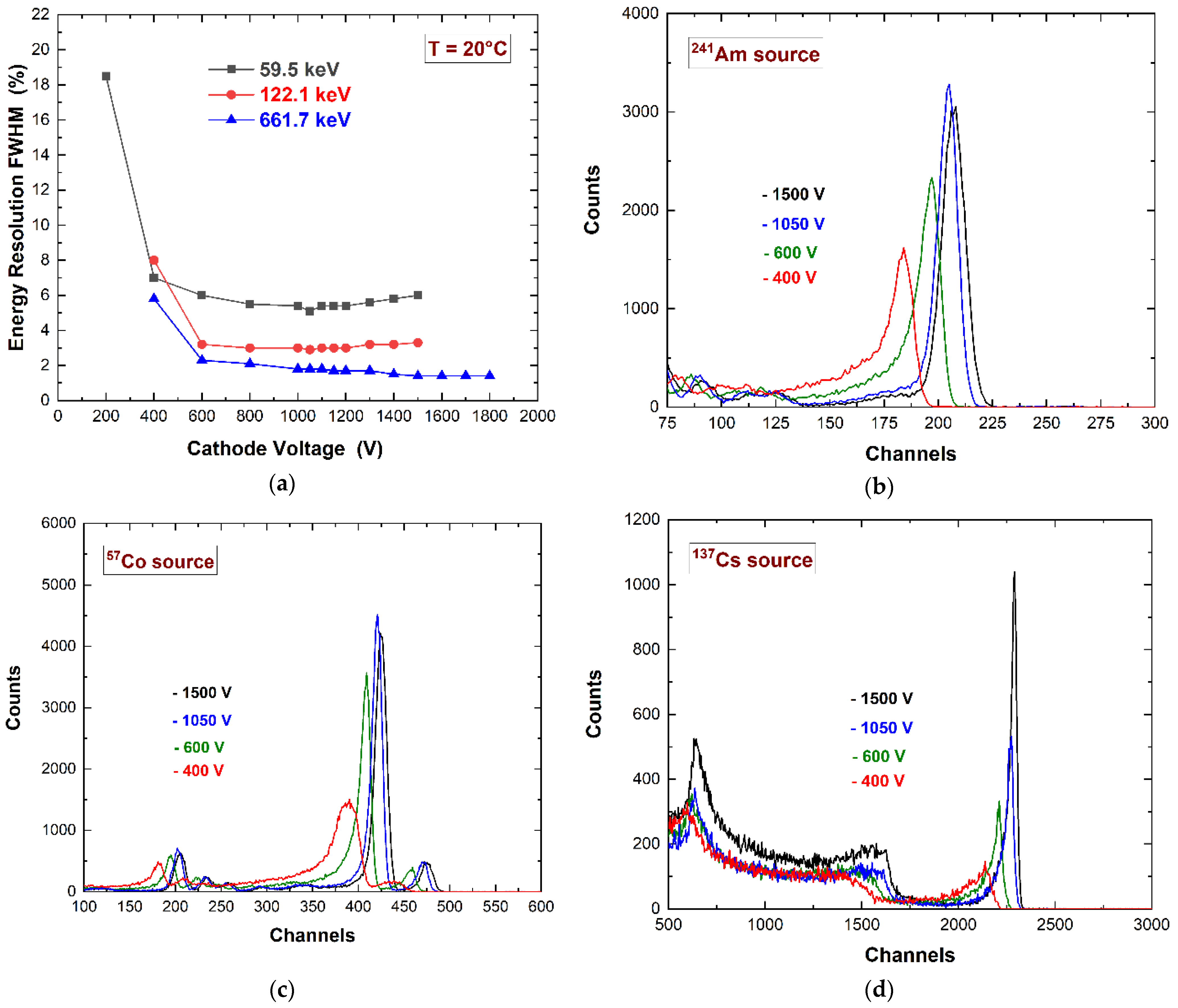
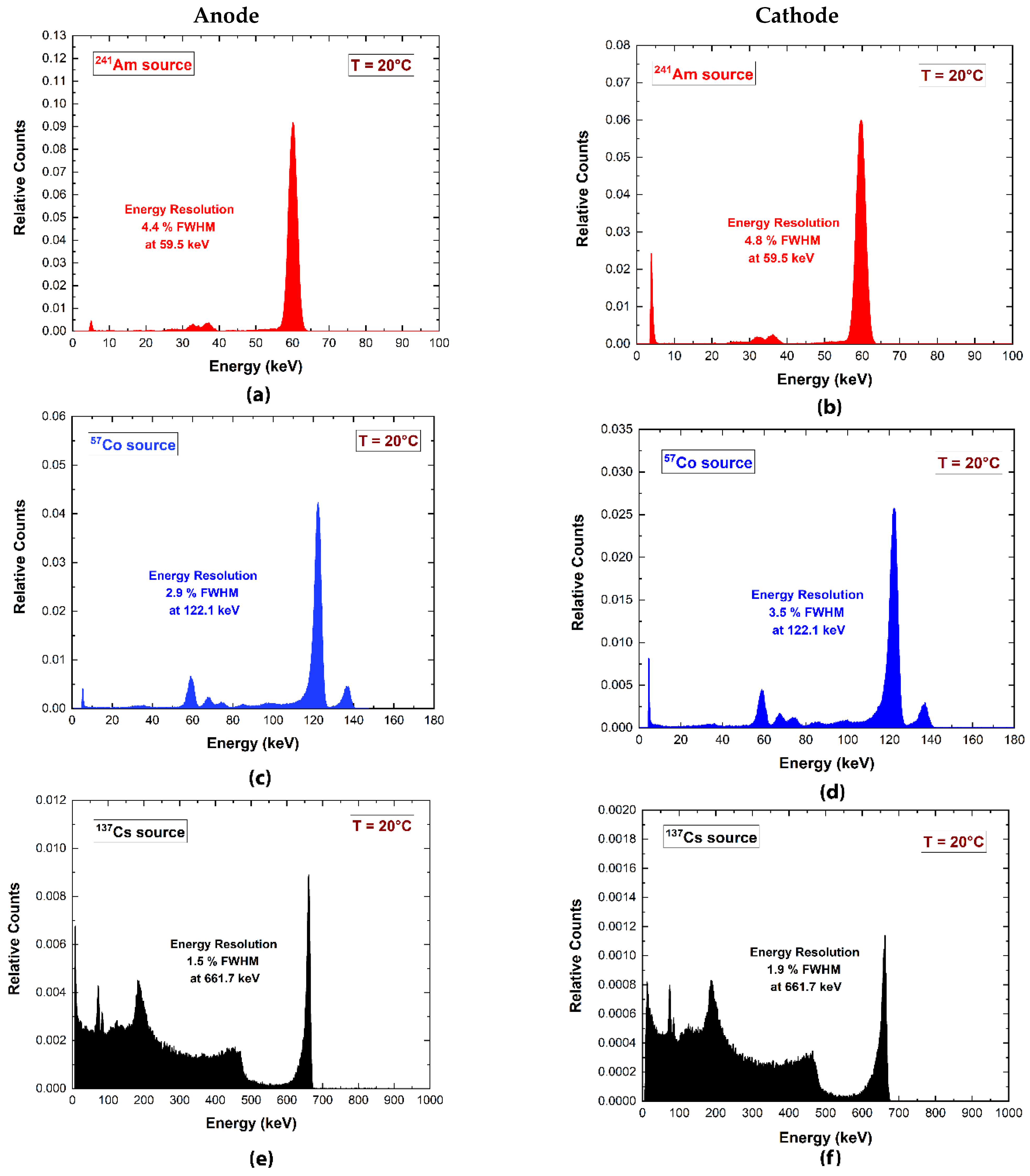
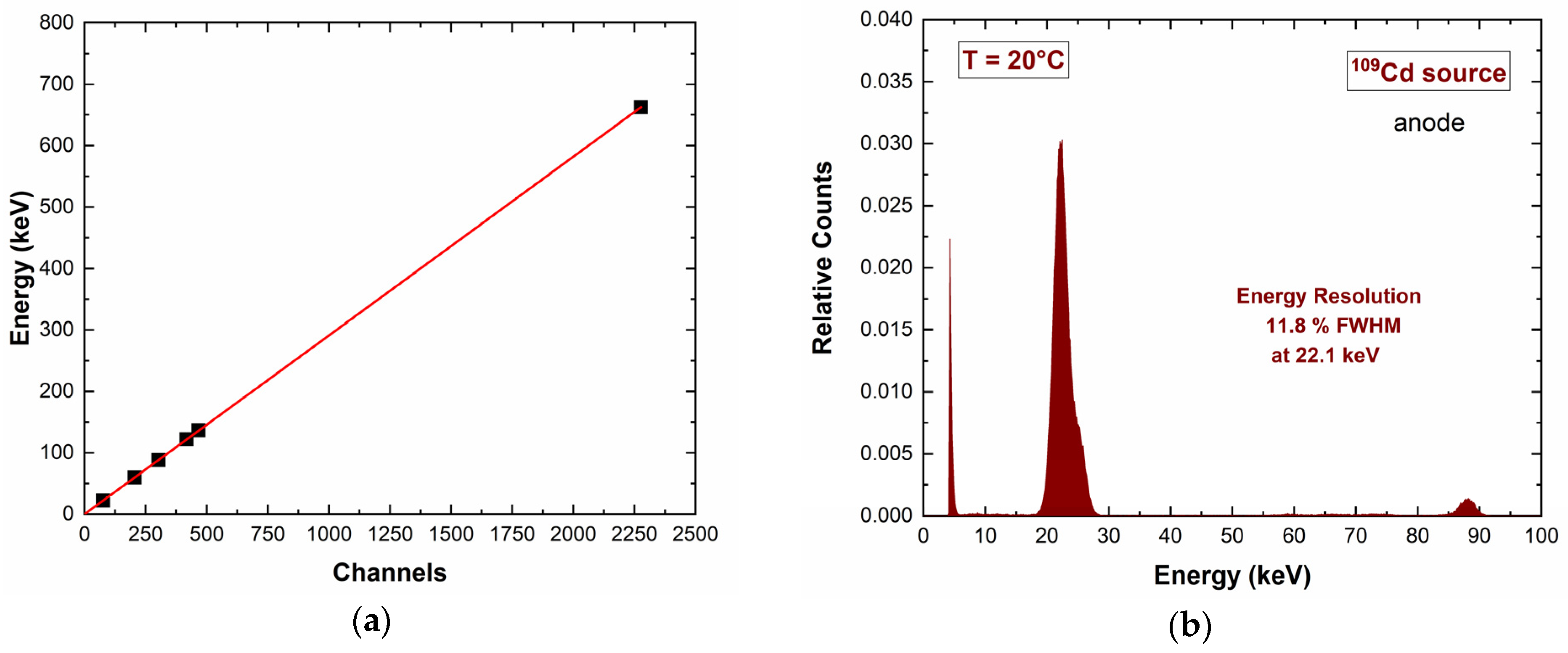
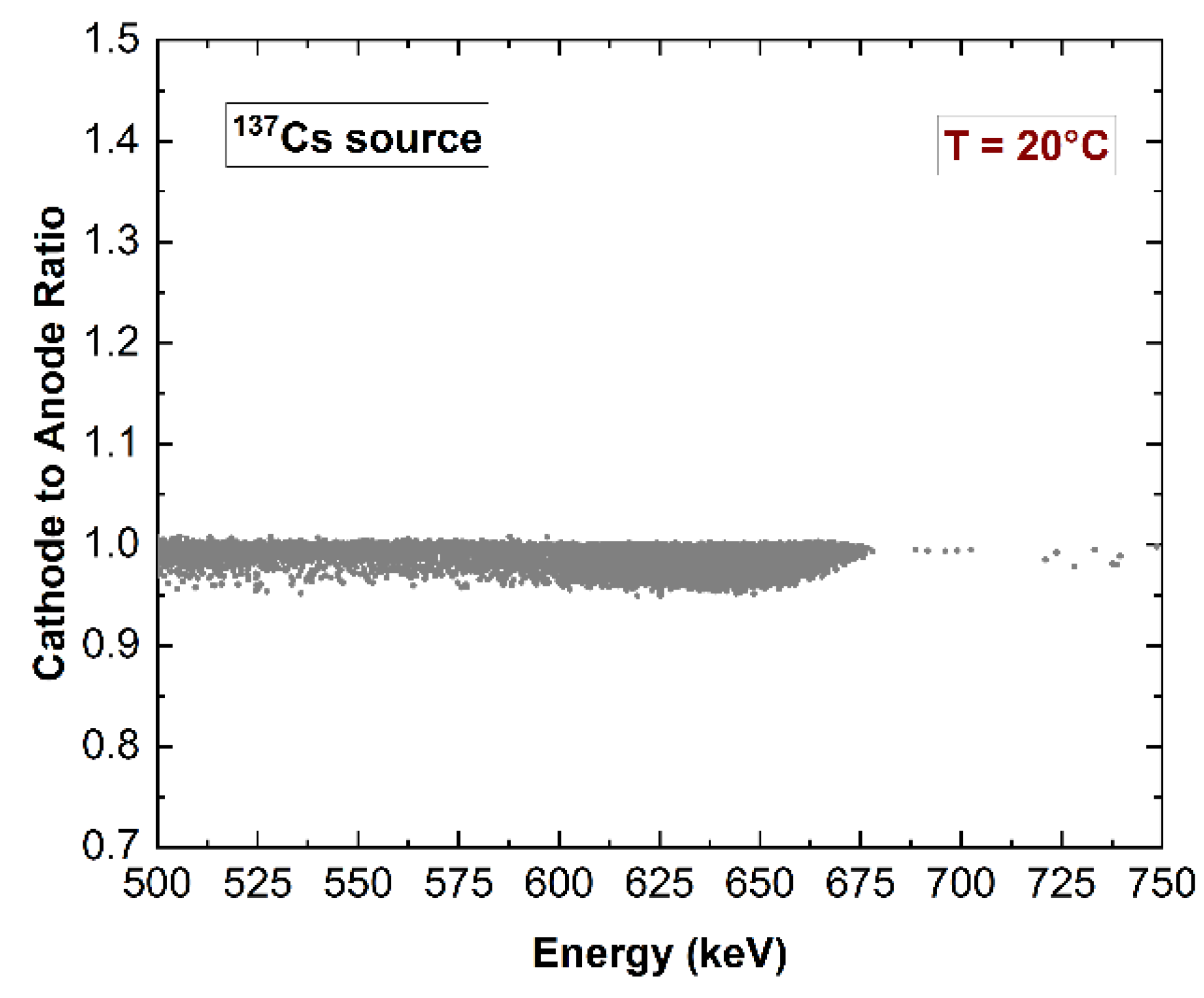

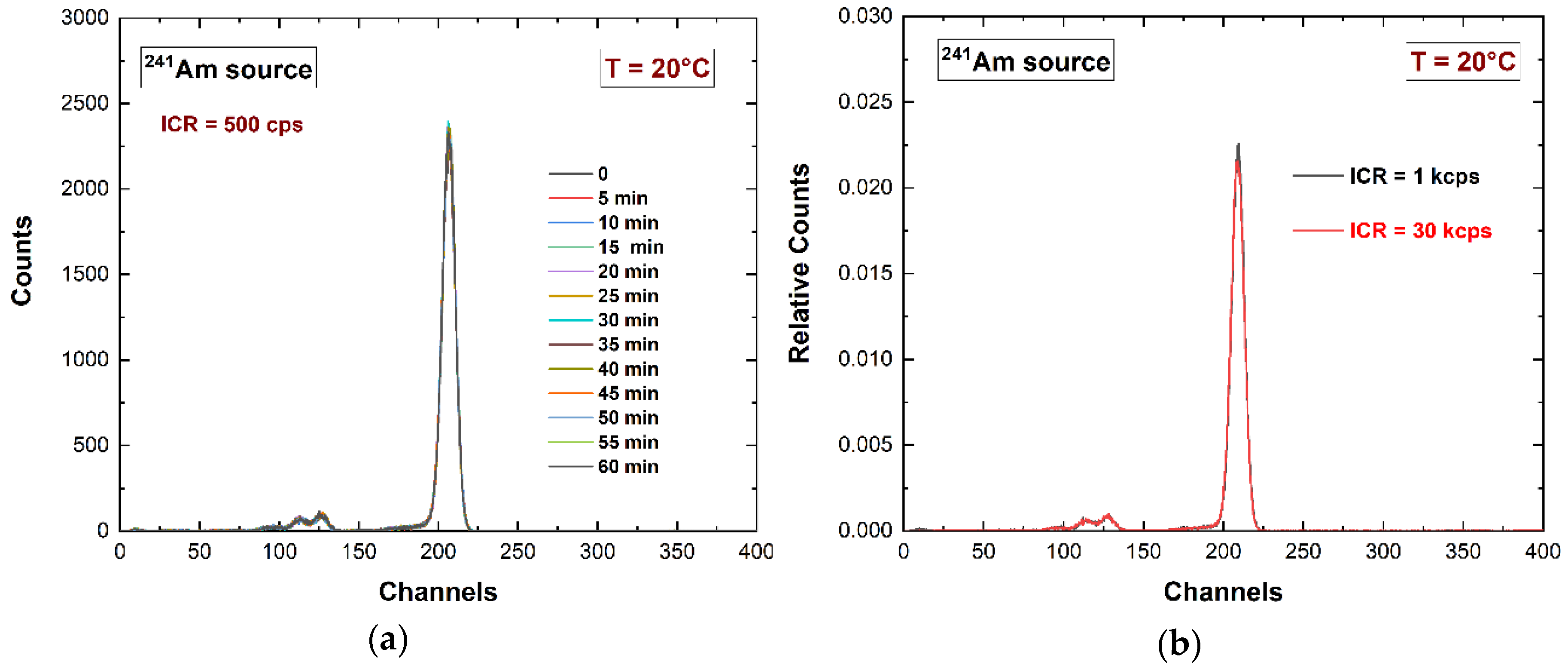

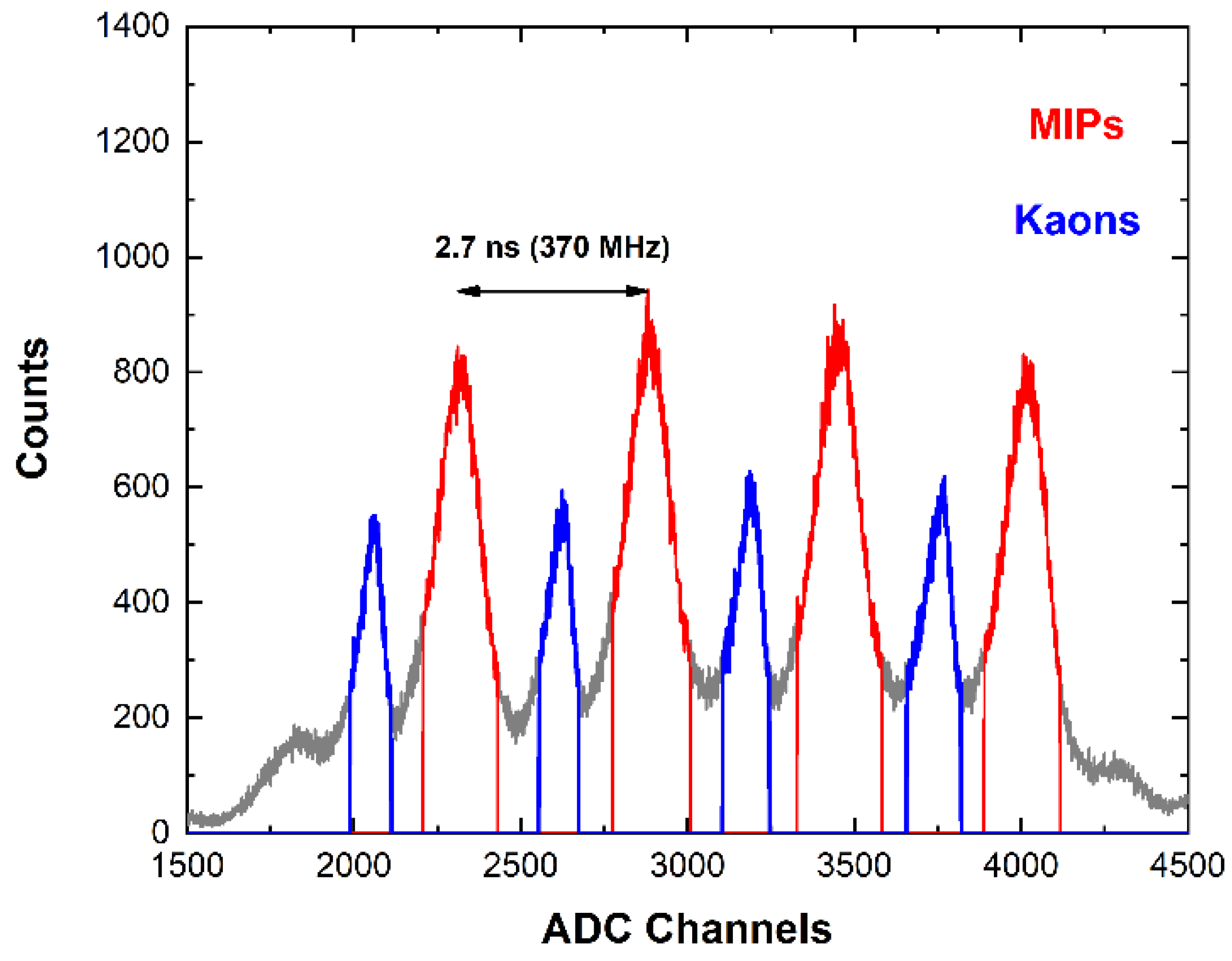

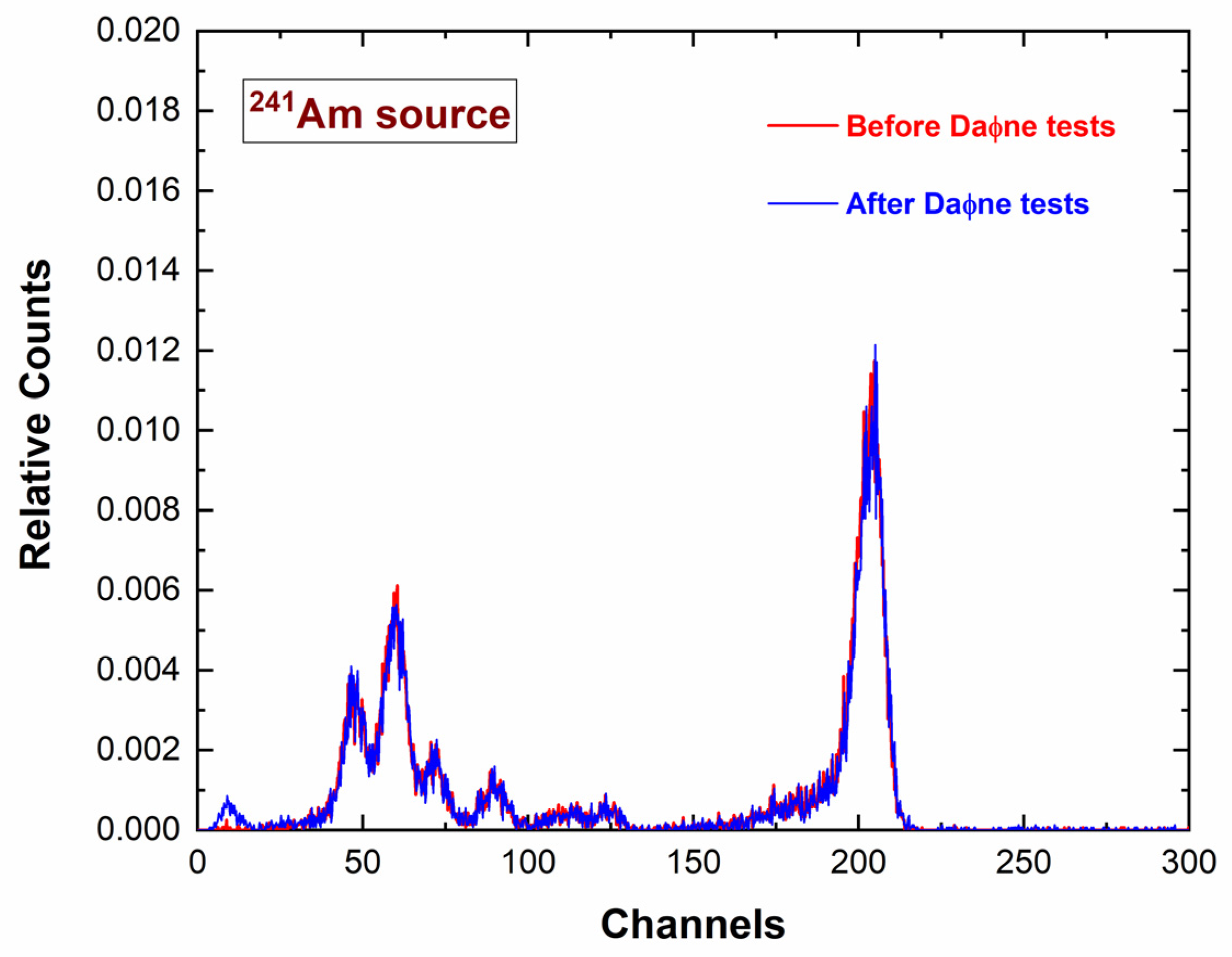
Disclaimer/Publisher’s Note: The statements, opinions and data contained in all publications are solely those of the individual author(s) and contributor(s) and not of MDPI and/or the editor(s). MDPI and/or the editor(s) disclaim responsibility for any injury to people or property resulting from any ideas, methods, instructions or products referred to in the content. |
© 2023 by the authors. Licensee MDPI, Basel, Switzerland. This article is an open access article distributed under the terms and conditions of the Creative Commons Attribution (CC BY) license (https://creativecommons.org/licenses/by/4.0/).
Share and Cite
Abbene, L.; Buttacavoli, A.; Principato, F.; Gerardi, G.; Bettelli, M.; Zappettini, A.; Bazzi, M.; Bragadireanu, M.; Cargnelli, M.; Carminati, M.; et al. Potentialities of CdZnTe Quasi-Hemispherical Detectors for Hard X-ray Spectroscopy of Kaonic Atoms at the DAΦNE Collider. Sensors 2023, 23, 7328. https://doi.org/10.3390/s23177328
Abbene L, Buttacavoli A, Principato F, Gerardi G, Bettelli M, Zappettini A, Bazzi M, Bragadireanu M, Cargnelli M, Carminati M, et al. Potentialities of CdZnTe Quasi-Hemispherical Detectors for Hard X-ray Spectroscopy of Kaonic Atoms at the DAΦNE Collider. Sensors. 2023; 23(17):7328. https://doi.org/10.3390/s23177328
Chicago/Turabian StyleAbbene, Leonardo, Antonino Buttacavoli, Fabio Principato, Gaetano Gerardi, Manuele Bettelli, Andrea Zappettini, Massimiliano Bazzi, Mario Bragadireanu, Michael Cargnelli, Marco Carminati, and et al. 2023. "Potentialities of CdZnTe Quasi-Hemispherical Detectors for Hard X-ray Spectroscopy of Kaonic Atoms at the DAΦNE Collider" Sensors 23, no. 17: 7328. https://doi.org/10.3390/s23177328
APA StyleAbbene, L., Buttacavoli, A., Principato, F., Gerardi, G., Bettelli, M., Zappettini, A., Bazzi, M., Bragadireanu, M., Cargnelli, M., Carminati, M., Clozza, A., Deda, G., Del Grande, R., De Paolis, L., Fabbietti, L., Fiorini, C., Guaraldo, C., Iliescu, M., Iwasaki, M., ... Curceanu, C. (2023). Potentialities of CdZnTe Quasi-Hemispherical Detectors for Hard X-ray Spectroscopy of Kaonic Atoms at the DAΦNE Collider. Sensors, 23(17), 7328. https://doi.org/10.3390/s23177328











